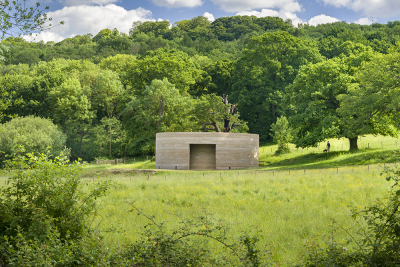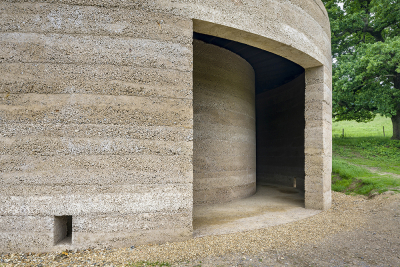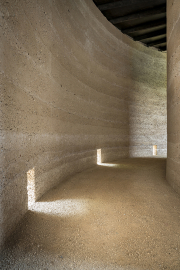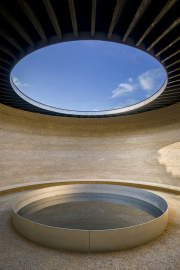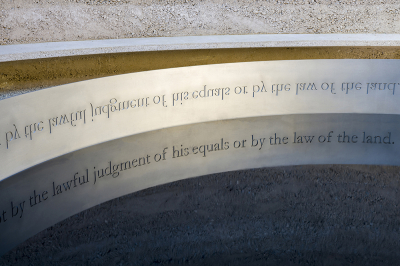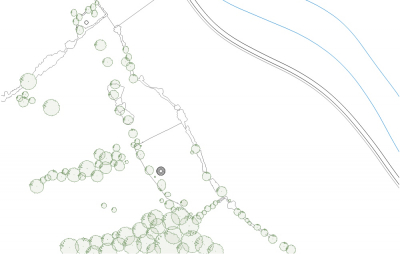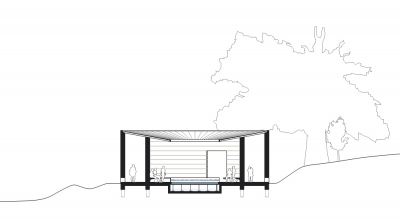Writ in Water
Writ in Water, is a major architectural artwork by Mark Wallinger, in collaboration with Studio Octopi, for the National Trust at Runnymede. The artwork celebrates the enduring legacy and ongoing significance of Magna Carta.
Writ in Water reflects upon the founding principles of democracy, providing a space for reflection and contemplation.
Writ in Water is the first permanent commission for the National Trust through Trust New Art, their contemporary arts programme. The aim is to provide a lasting space for reflection on the significance and influence of Magna Carta and the extraordinary role it has in the history of human rights.
The building’s built in cubits, the most ancient unit of measure and uses rammed stone from the site.
An exterior doorway leads to a simple circular labyrinth, in which the visitor can choose to turn left or right to reach an inner doorway that opens out into a central chamber. Here the sky looms through a wide oculus above a pool of water, as reflective as a still font.
The sides of the pool are inscribed on the inner side, the water reflecting the reversed and inverted lettering of Clause 39 as the visitor moves round the pool to reveal its words.
Over 800 years ago Runnymede witnessed the feudal barons forcing King John to seal Magna Carta. Writ in Water reflects upon the founding principles of democracy through a meeting of water, sky and light.
The large-scale circular building emerges from the hillside, flanked by the River Thames on one side and an ox-bow lake on the other, itself a trace of the river’s earlier course.
Responding to this feature of the landscape, Writ in Water takes its name from the inscription on John Keats’ gravestone, which reads, ‘Here lies one whose name was writ in water’.
Writ in Water was commissioned to connect visitors with the significant site history. It creates a tranquil space in which to reflect, offering visitors the chance to consider the ongoing significance and influences of Magna Carta, with particular reference to Clause 39.
Long-term artworks of this kind aim to create experiences of our places that move, teach and inspire. The structure creates a lasting legacy and a profound change in how people experience Runnymede. It offers a new experience for visitors, encouraging alternative ways of thinking and reflecting on the landscape for years to come.
The bespoke rammed stone walls use locally sourced aggregates and sand that are crushed together forming the textured walls. Built up in layers 1 cubit high the resulting strata references the local geology at the heart of this ancient land. The texture of the walls varies depending on the amount of tamping, undertaken by hand, and contrasts with the bead blasted stainless steel surround to the pool.
The roof structure consists of 52 stained Douglas Fir rafters, continuing a reference to time; there are 12 apertures at low level in the outer walls lighting the path between the two walls. Water from the roof flows into the pool naturally refilling it. The disturbance of the reflection is a reminder of the fragility of our human rights.
The bead blasted stainless steel sides of the pool are inscribed on the inner face, the water reflecting the reversed and inverted lettering of Magna Carta Clause 39.
A bench was cast as part of the inner wall. Sitting on the bench the external sounds are hushed by the mass of the walls, inviting one to contemplate the meaning of Magna Carta today.
Since completion swallows have nested in the roof which further animates this hidden chamber.

